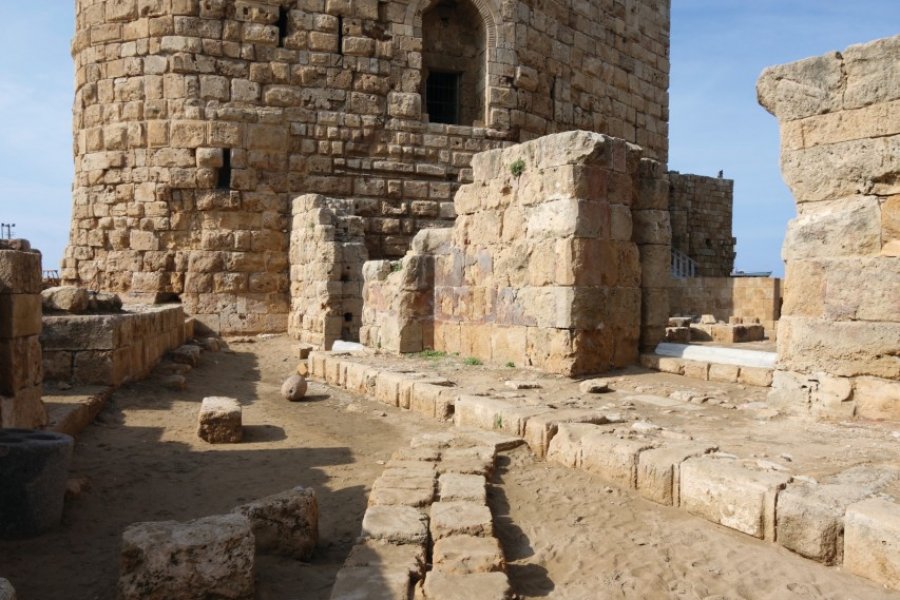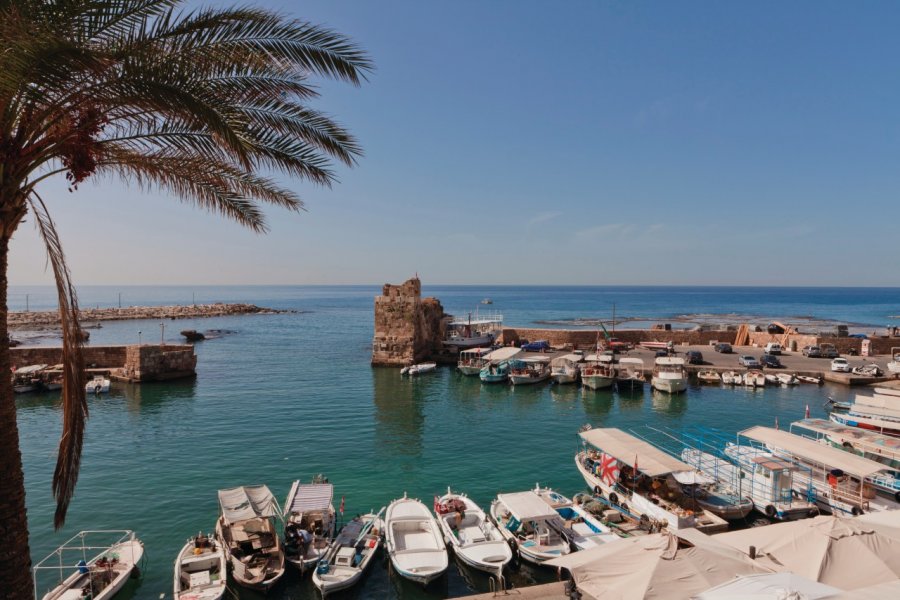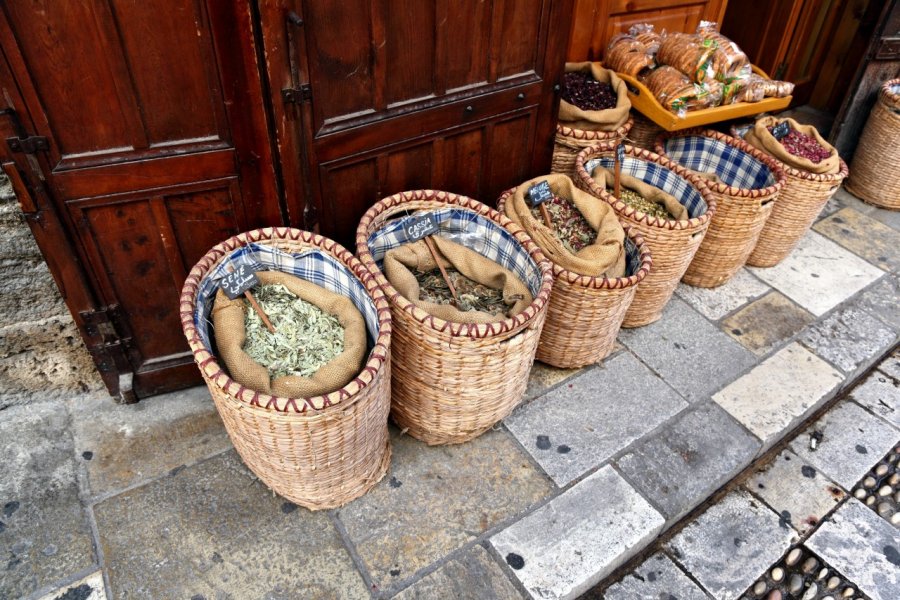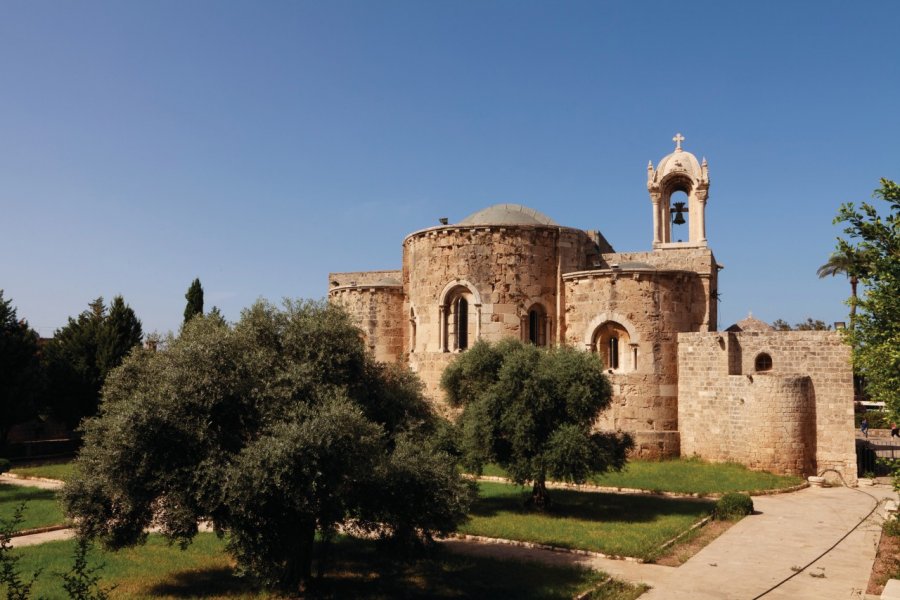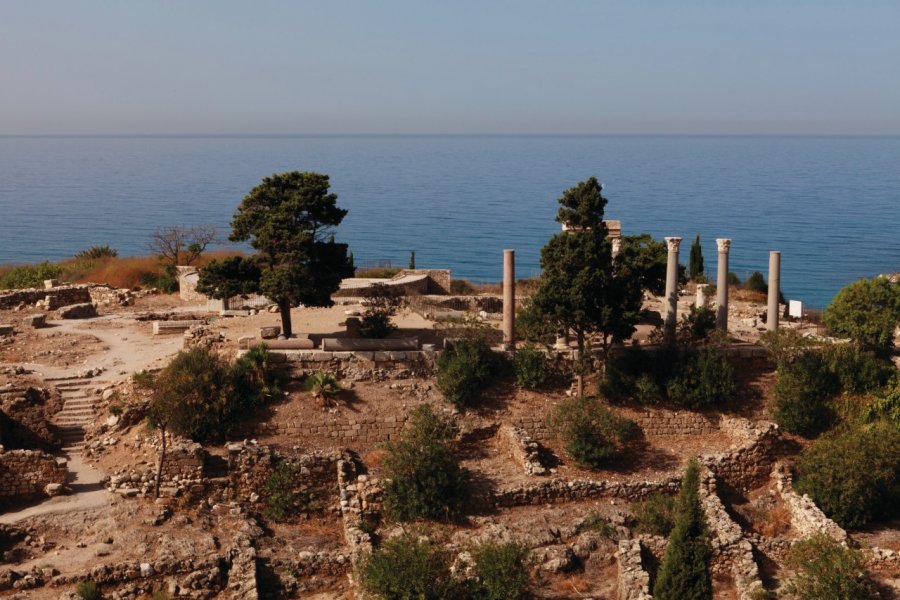Travel Guide Byblos (Jbeil)
Find an accommodation
Advertising
It is here on the mound overlooking the Mediterranean that begins the fabulous story of Byblos. That of a village of fishermen in Neolithic, which became one of the most important religious, cultural and commercial centres in the Mediterranean. Known as Gebal (Jubayl) in the Old Testament, the Greeks will give him that of Byblos, a term designating the papyrus.The first human settlement in Byblos dates back to the Neolithic period (5250-3800 BC). Grouped in round huts, people cultivated cereals and raised many animals. In the fourth millennium BC, at the time of chalcolithique (3500-3100 BC), Byblos was invaded by a new canton. Technically more advanced, it already works copper. Thanks to the knowledge of their conquerors, the men of Byblos improve their weapons and tools, develop the art of ceramics and bury their corpses in foetal position in large pots placed inside the village itself.At the end of this period, a transformation occurs in the construction mode. The proto facilities (3100-2900 BC) are solid rectangular houses grouped behind an enclosure. In the village, craftsmen hone their pottery shaped in turn and baked in the oven. The use of the metal is widespread and the funeral rites are modified: the dead are now buried outside the enclosures.During the period known as ancient bronze (2900-2300 BC), Byblos passes at the stage of urban organization. The city then develops behind a bulwark. Houses, consisting of several pieces, stick to each other to create a network of narrow streets connecting different neighbourhoods, and an ingenious piping system ensures the flow of water. At that time, Byblos established privileged trade relations with Mesopotamia and Egypt. The appearance of writing in these two areas will accelerate the cultural evolution of phoenician towns. In the second half of the third millennium BC, monumental residences will emerge, attesting to the presence of a opulent bourgeoisie. The temples multiply and that of the goddess Hathor or Baalat-Gebal, Dame de Byblos, is enriched thanks to the offerings sent by the pharaohs. Economic relations with Egypt will indeed enable the city to prosper. In exchange for cedar wood necessary for the construction of vessels and temples, Byblos receives many materials such as flax, ropes or gold.At the end of the millennium (2150-2000 BC), the Amorites, originating in the Syrian desert, invaded La, destroying all the coastal cities in the passage. This period of unrest interrupts trade with Egypt for 200 years. Byblos will quickly rebuild, modifying the structure of its temples. She then returned with Egypt to create a pseudo-hieroglyphic handwriting.Less than three centuries later, conquerors from Asia took power in Egypt (1725 BC). The Hyksôs introduce new types of weaponry (daggers, spears…). We will also find very beautiful weapons dating back to that time in the tombs of Byblos.The king of Thebes finally hunts the Hyksôs of Egypt in 1580 BC, and continues to Palestine. His successors undertake to extend their domination towards the banks of the Euphrates and the Taurus chain, establishing a kind of protectorate on Syria and Palestine. Yet, despite the call for relief launched by the king of Byblos, Rib Addi, the pharaohs Amenhotep III and Akhenaton (the shelves of Tell el-Amarna, th century B.C.), Egypt abandons its vassal to the Emprise's grip, which then controls a good part of Syrian territory. It will have to wait for the power of Rameses II (1290-1224 BC) to stop the breakthrough and conclude a peace treaty. It is at this time that in Byblos the first documents using pure Phoenician handwriting, with twenty-two signs, appear in Byblos.A century later, the peoples of the sea, pushed back from the islands and shores of South-Eastern Europe, invest La. The tribes in the south take the name Me, the others - called Tjekers - are engaged in piracy in the Tyre region. The assimilation of the peoples of the sea to the populations of the coastal cities leads to a tremendous increase in navigation. Those sailors who the Greeks named "Phoenicians" sail to the borders of the Western Mediterranean and open their first counters in Algeria and Spain.From th to th BC BC, Tyre and Aradus (Syria) dominate maritime Trade. Egypt has lost its supremacy and only maintains a simple religious grip on the phoenician towns. Statues of pharaohs were found in the temple of Baalat-Gebal (the Lady of Byblos) dating back to that time.However, from the th century BC, Assyria is going to threaten the phoenician towns. In exchange for their independence and security, they must send heavy taxes to the Assyrian monarch. In order to avoid any rebellion against power in place, Assyrian and then babylonians sovereigns begin a deportation policy. The people of Israel are thus sent in captivity to the other end of the empire following the capture of Jerusalem by Nebuchadnezzar's army (587 BC). During this Assyro-Babylonian period, Aramaic becomes the common language for all the peoples of the East who are experiencing a tremendous cultural development.It is when Cyrus, king of the Persians, conquered the whole Babylonian Empire (539). La will be part of one of its provinces (5 th satrapie). The desire to dominate Egypt and the Mediterranean basin forces Cyrus to allow the return of Jews to their land of origin (edict of Ecbatane, 538 BC). An era of great prosperity is succeeding, provided by the development of agriculture and trade. Byblos benefits from increasing and hitting a series of currencies on behalf of his monarchs. A fortress fortress is built and the temple of Baalat-Gebal is rebuilt by King Yehawmilk. The Persians choose to join the Phoenicians to build a powerful fleet and engage in tough battles with the Greeks.The defeat of Darius III in 333 obliges the Persian army to withdraw to the banks of the Euphrates. This situation allows Alexander the Great to deploy his troops along the Phoenician coast, with the exception of Tyre that will resist for years. Many Greek settlements settled in the territory. Byblos quickly adopts the customs and language of its new masters. During excavations, there were also documents indicating the existence of a gymnasium. This specifically Greek institution ensured the education of ephebes and promoted the virtues of physical culture. After years of struggle with their Egyptian neighbours, the Seleucids (Greeks) weakened and the King of Armenia, Tigrane, will prevail over Phoenicia (83-69 BC).The arrival of Pumped in the Middle East, in 63 BC, cut short in the Hellenistic period and Phoenicia is integrated into the Roman province of Syria. The emperor brings calm and security to a country threatened by robbers from the Arabian desert.Taking advantage of the New Paths Open to Them, the Phoenicians develop their trading network throughout the Roman Empire. This prosperity allows Byblos to extend to the foot of the mountain. The tanks, lined with colonnades, bring tanks inside the city which, over the days, boast temples and new public buildings (theatre, baths, etc.). The city also remains the undisputed centre of the cults of Adonis and Osiris celebrating the triumph of life.Yet the Roman era will soon sink. The wave of barbaric hordes on Europe, the conversion of Constantine the Great to Christian religion and the transfer of its capital to Byzantium (330) precipitate the fall of Rome. In spite of everything, Christianity succeeds in restoring the unity of the new Byzantine Empire, and a diocese even sees the day in Byblos. However, excavations on the site were not able to provide very precise elements of this period due to the poor conservation of buildings.Christianity will not be able to stand for the Muslim conquest, which, from 636 onwards, will extend its empire from the Pyrenees to Central India. From 661 to 750, the Middle East will be governed by the umayyad caliphs sitting in Damascus. Subsequently, the Abbassides established their capital in Baghdad. The time of Des - and Abbassides - will leave few traces on the Tertre mound.The arrival of the crusaders (1098) came to reclaim Jerusalem, allowing Eastern Trade to regain momentum by opening up to Europe. Since 1108, the crusaders occupy Byblos that they call "Gibelet". They build a castle and raise ramparts around the city. Byblos was recaptured and disbanded by Saladin in 1187, and after a few years of new cross-domination it will fall in 1266 in the hands of Sultan Baïbars.After the departure of the crusaders, the country passes under the domination domination (1289-1515) and Byblos sombre in Oblivion.In 1515, the Middle East was invaded by the Ottomans. Lebanon will then live under the cutting of local lords governing their domains in a feudal way.In 1860, following the intervention of the French army in Lebanon, Napoleon III asked Ernest Renan to do a study on phoenicians sites. Thanks to writings dating from the first century. J repère the site of the ancient Byblos, then covered by vegetation and some houses. This first step will be followed, as early as 1919, by more in-depth excavations by two French archaeologists: Pierre Montet and Maurice Dunand. At the time of the explorations, the mound on which the ancient city extends will gradually deliver the riches of the civilizations now missing.
What to visit Byblos (Jbeil)?
Advertising
Suggested addresses Byblos (Jbeil)
Weather at the moment
Advertising
Organize your trip with our partners Byblos (Jbeil)
Transportation
Book your plane tickets
Car Rental
Boat rental
Accommodation & stays
Find a hotel
Holiday rental
Find your campsite
Tailor-made trip
Immersion travel
Services / On site
Activities & visits
Find a doctor
Byblos (Jbeil) travel inspiration
Find unique Stay Offers with our Partners
Pictures and images Byblos (Jbeil)
Other destinations nearby Byblos (Jbeil)
5 km away
25 km away
100 km away

